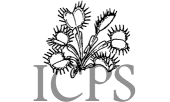|
Carnivorous Plant Newsletter
Volume 40, Number 1, March 2011, pages 24 - 27
New Cultivars
Drosera ‘Ambrosia’
Drosera ‘Dreamsicle’
The Drosera Brian Barnes Group
Drosera ‘Ambrosia’ and ‘Dreamsicle’
Submitted: 13 September 2010
In 2007, I received four plants from Barry Rice labeled as Drosera tracyi “white flower” and
grew them for almost two years in full Florida sun. I was pleased to find that the plants showed
no signs of color whatsoever including the glands, flowers, and tentacles which proved them to be
completely anthocyanin free. The plants also produced true from seed. Realizing the vast hybrid
potential of the plant, I decided to cross them with one of several Florida all-red forms of D. filiformis var. filiformis plants that I had existing in my collection from seed harvested during a prior
scientific research expedition. Upon germination, the seedlings immediately expressed hybrid vigor
with many of the plants taking on the larger, more robust size and paler yellowish leaf color of the
anthocyanin-free D. filiformis var. tracyi parent. Traits of both parents were clearly seen throughout
the resulting seedling colony in varying degrees. I selected two plants that clearly showed the traits
of both parents (see Figure 1).
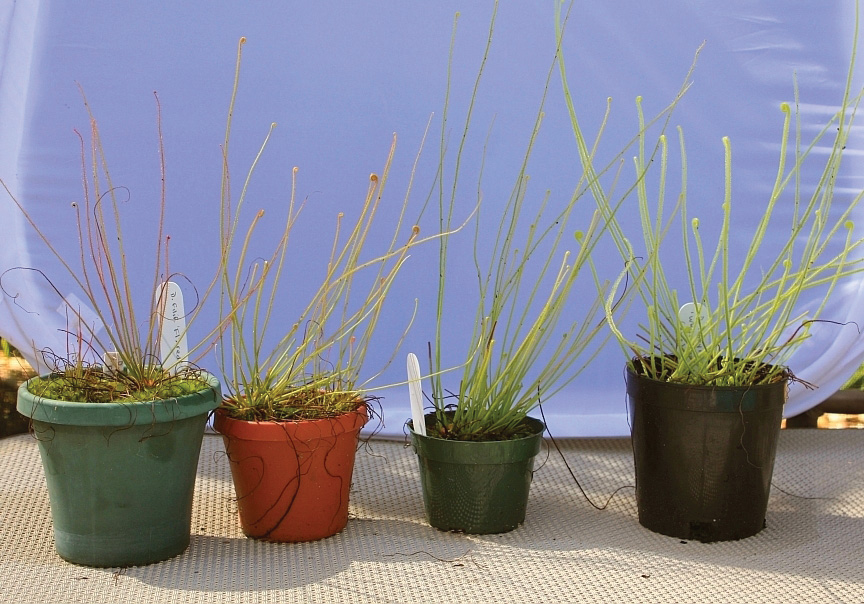
Figure 1: For comparison (from left to right) Florida all-red form of Drosera filiformis var.
filiformis, D. ‘Dreamsicle’, D. ‘Ambrosia’, and anthocyanin-free form of D. filiformis var. tracyi. Photo by Brian Barnes.
Drosera ‘Ambrosia’= (anthocyanin-free D. filiformis var. tracyi × Florida all-red form of D. filiformis var. filiformis) retains many traits of the anthocyanin-free D. filiformis var. tracyi parent including pale yellow leaves and colorless tentacles, but has the dark red glands of the Florida allred form of D. filiformis var. filiformis (See Figure 2). This tends to make the plant appear similar to Drosophyllum in many ways. This varies greatly from the description of D. ‘California Sunset’, in which the tentacles and glands are “light red to deep pink in color”.
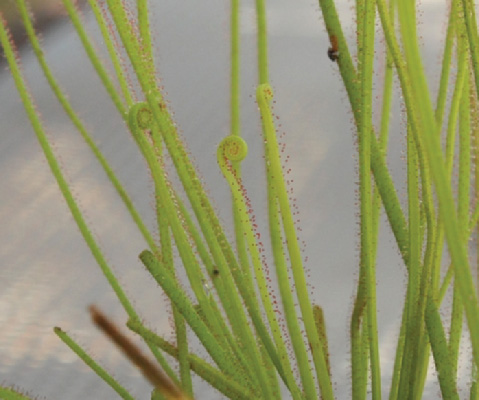
Figure 2: The green leaves and red glands of Drosera ‘Ambrosia’.
Drosera ‘Dreamsicle’ = (Florida all-red form of D. filiformis var. filiformis × anthocyanin-free D. filiformis var. tracyi) exhibits the pale yellowish leaf color of the anthocyanin-free D. filiformis var. tracyi parent combined with the coloration of the other D. filiformis var. filiformis parent. However, the leaves, tentacles and glands take on a fiery-orange coloration, giving the overall plant an eerie orange glow (see Figure 3). Once again, this varies greatly from the “light red to deep pink in color” description of the glands and tentacle coloration of D. ‘California Sunset’. Both forms exhibit very large showy flowers much like D. filiformis var. tracyi and are infused with the lightest shade of pink (see Figure 4), which I attribute to the white-flowered anthocyanin-free D. filiformis var. tracyi parent. A naturally occurring hybrid between the Florida all-red form of D. filiformis var. filiformis × D. filiformis var. tracyi exists in the wild in north Florida and was documented by Prof. Barry Rice and myself in 2009 and shows traits relevant to these man-made hybrid crosses. D. ‘Dreamsicle’ was named after the fiery-orange tentacles and glands that stand out strongly against the pale yellowish leaves which reminded me of a glowing orange popsicle or “creamsicle” as it is called. D. ‘Ambrosia’ was named after the sweet nectar drink of the gods in Greek mythology. The dark red nectar laden glands of the plant reminded me of such a divine drink! To maintain the desired character traits of these cultivars, vegetative propagation by leaf cuttings and division only.
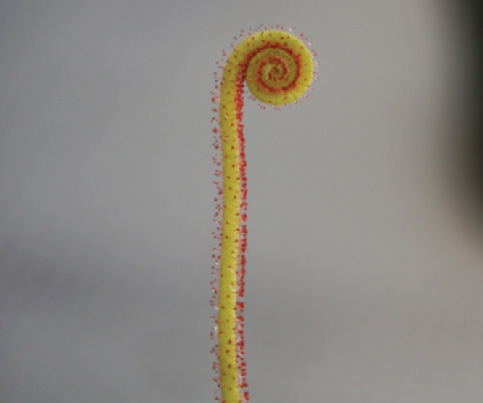
Figure 3: The fiery glow of Drosera ‘Dreamsicle’.
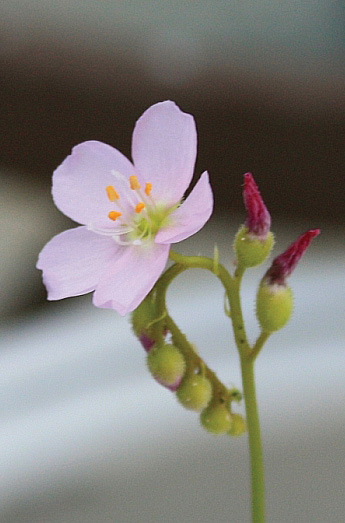
Figure 4: The large pink showy flowers of the cultivars.
—Brian Barnes • Longwood, FL 32750 • USA
The Drosera Brian Barnes Group
Submitted: 13 September 2010
In early 2007, I received a Drosera kenneallyi and D. lanata plant which were both purchased as adult plants from Hert’s Gardens, a respected nursery in Lakeland, Florida. Both plants flowered at the same time later that year at which time I successfully made the hybrid cross: D. kenneallyi × D. lanata. All of the resulting seedlings immediately showed hybrid vigor, along with the combined traits of the parents in various degrees of intensity. A greener hirsute form that favored the green D. lanata parent (D. ‘Woolly Beast’) and an all-red hirsute form which greatly favored the D. kenneallyi parent, (D. ‘Woolly Red’) was chosen from the vast number of resulting hybrid seedlings (see Figures 5 and 6). All resulting hybrid plants also experience dormancy, much like the two parents. However, dormancy can be avoided if proper year-round growing conditions are met in cultivation.

Figure 5: Parents and hybrid flowers for comparison (left to right): Drosera kenneallyi, D. lanata, and D. ‘Woolly Beast’.
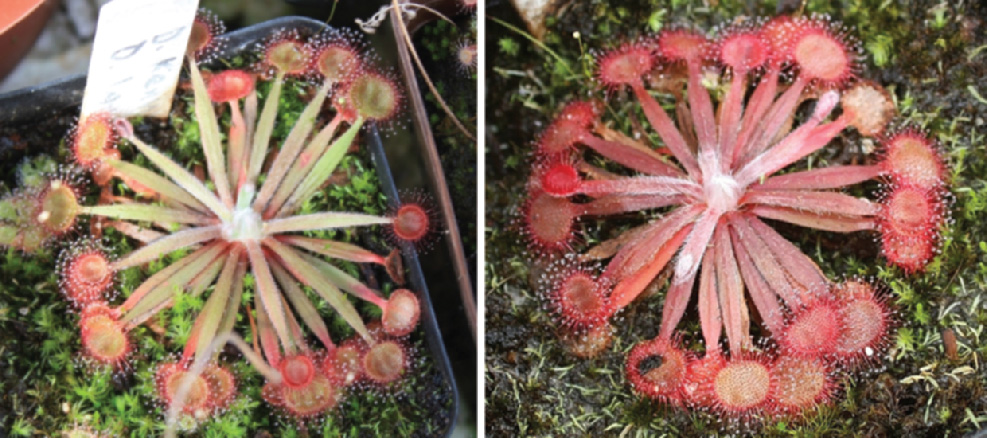
Figure 6: Note the hirsute petioles and widened laminae of Drosera ‘Woolly Beast’ (left) and the blood-red coloration and hirsute characteristics of D. ‘Woolly Red’ (right).
Since both hybrid cultivars and their siblings possess the wide petioles and laminae of D. kenneallyi along with the hirsute characteristics of D. lanata in varying degrees, the name Drosera Brian Barnes Group is therefore applied to all D. petiolaris-complex plants that exhibit this very unusual combination of very distinctive unquestionable hybrid traits. The atypical varying hirsute D. lanata characteristics of the hybrids are exhibited at various times during the year, however the wide D. kenneallyi leaf blade characteristics that are not atypical to D. lanata are consistent year-round in both D. ‘Woolly Beast’ and D. ‘Woolly Red’ and other resulting D. kenneallyi × lanata hybrids in the Drosera Brian Barnes Group.
The Drosera Brian Barnes Group was named after the author of this publication, who created the above mentioned hybrid cultivars and their siblings. The names D. ‘Woolly Beast’ and D. ‘Woolly Red’ were concluded by combining visible attributes of the plants involved in the hybrid parentage of the two cultivars and their resulting offspring, whose parents are Drosera kenneallyi and Drosera lanata. To maintain the desired character traits of these cultivars, vegetative propagation by leaf cuttings and division only.
—Brian Barnes • Longwood, FL 32750 • USA
|
